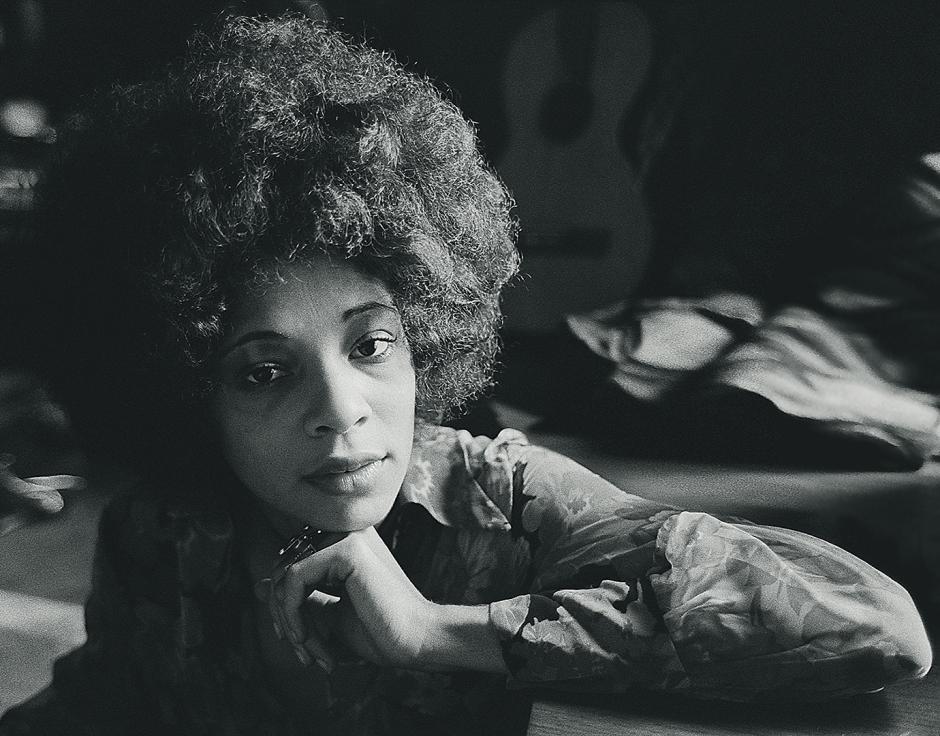“They say I’m different ’cause I’m a piece of sugar cane, sweet to the core, that’s why I got rhythm, my great grandma didn’t like the foxtrot, nah, instead she’d spit her snuff and boogie to Elmore James.”
So goes the opening of the title track from Betty Davis’ 1974 sophomore record They Say I’m Different. And in those words, you could hear a revolution of thought and intent, and of origin, that followed her throughout her career. Davis was a musician whose work could never be properly gauged in its time – it was simply too incendiary, too emotionally present to ever be understood at the time of its release.
Oh, there were people who fell under her sway and felt a kinship in the raw sexuality and unfiltered physical dynamics at play in her songs, but time has shown us the true relevance and scope of her genius. She was channeling something deeper and more volcanic than most anything could recognize; she tapped into a vein of seismic emotional turbulence and personal agency at a time when it was unexpected and caused more than its fair share of awkward dinner conversations, I’m sure…I hope.
And with her death yesterday at the age of 77, there is now something missing, a crater in our collective musical consciousness. I feel it, an emptiness, a soreness that we’ve lost something precious and necessary. This feeling will pass, as it has passed when we’ve lost others so ingrained within certain sections of musical history. But Davis’ passing is especially hard, as the ideas and flagrant middle fingers she often gave to mainstream convention are just as relevant today as they were back then.
She sang about the liberties of female sexuality in a way that was honest and blunt. She knew that it had to be this way. She didn’t want to sidestep the specifics of what she wanted and want she knew other women wanted. Her records were filled with breathless R&B jams and funk opulence. Starting with her self-titled debut 1973, she took full control of her own narrative, never allowing those around her to shape her world in any capacity. Recorded between 1972 and 1973, it was testament to her skill as a writer and creative touchstone that she wrote all the songs herself, further crafting a space where her desires and motives were on display with no filter between herself and her audience.
People were often at a loss at what to make of Davis and the often-confrontational aspects of her music and her live performances which caused such a stir in more traditional musical corners. Davis had begun her professional career as a model, and the experiences she had in that life informed the direction of her style and the way in which she presented herself. Religious groups often picketed her concerts, and her songs were mostly kept off the radio due to their perceived sexuality and the forthright nature of the narratives therein. She made people uncomfortable, and this made them fearful of her influence.
She became close friends with Sly Stone and Jimi Hendrix early on, and you could hear their influence on her records. Boisterous guitars and strong melodic lines were ever-present in her songs, allowing her to move around in a handful of genres, adapting them to fit her needs and wants. She possessed a gravity around which creative people seemed to orbit, and her music was informed, though not beholden, to some of these people.
Her third record Nasty Gal was released in 1975 – her first on a major label. And though it failed to perform commercially, its legacy has shown it to be another important document of funk music, one that continued to revel in Davis’ sexual positivity and her penchant for theatrical innovation. Her fourth album Is It Love or Desire? was shelved by the record label until 2009, when it was released by Light in the Attic Records. She retreated from the industry after Nasty Girl’s release and led a quiet life far from the spotlight until she shared a new song, “A Little Bit Hot Tonight”, in 2019, which was sung by her friend and ethnomusicologist Danielle Maggio.
Davis’ works of tornadic funk can leave you reeling for days, lost in their riotous sexual energy and the range of their complex arrangements. Hers was voice ahead of its time, a light that glowed bright and never diminished even when she stepped away from the studio. As we embrace her music, and the furious genius she offered with each song, we illuminate an artist whose time was short but elemental to the history of funk and R&B. Whether you stream, put on a record, or pop in a CD, sit back and bask in the glow of someone who never compromised her artistic vision and walked away having added considerable weight to our continuing musical histories.

